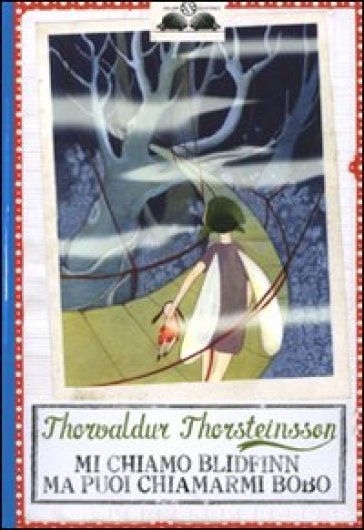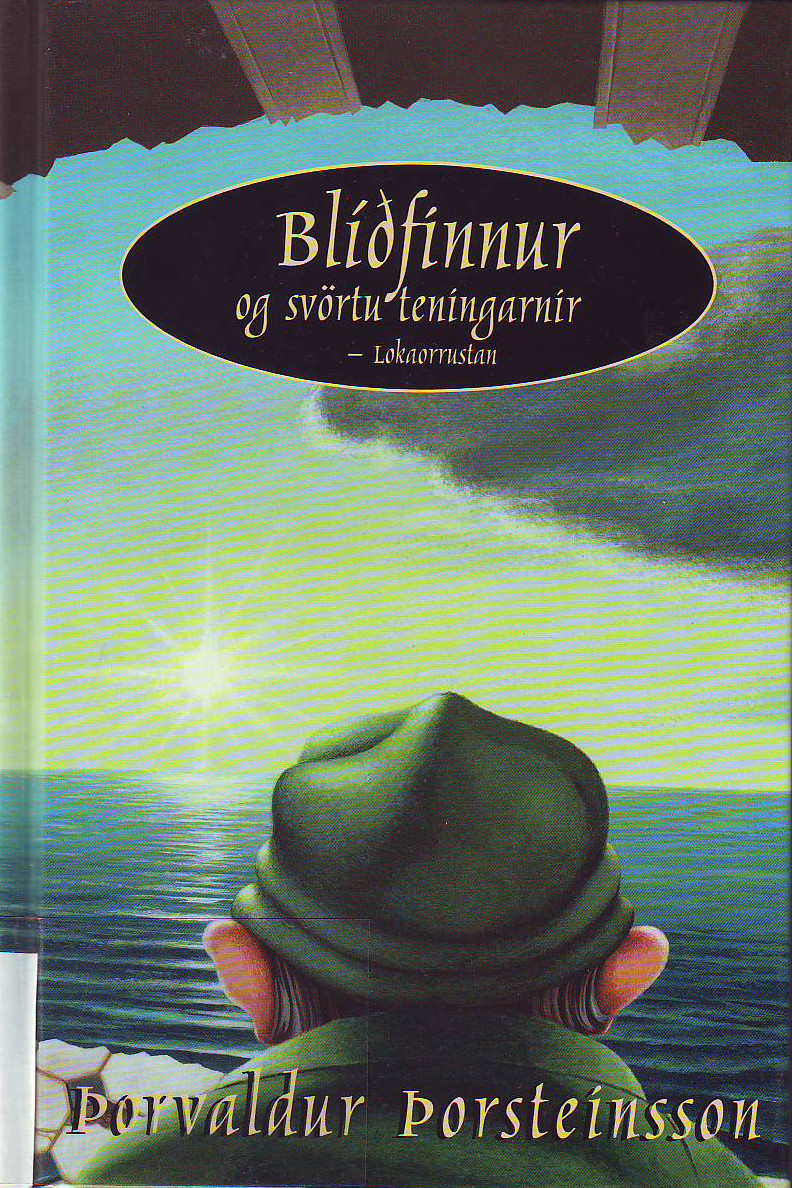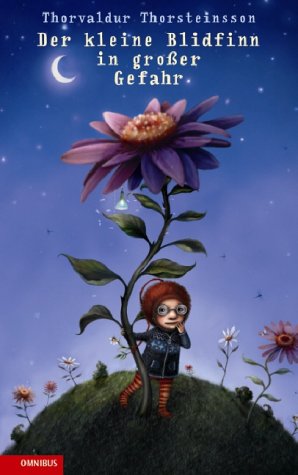Bio
Þorvaldur Þorsteinsson was born on November 7, 1960, in Akureyri. He studied at the Akureyri School of Visual Arts from 1977 –1981, graduated from The Icelandic College of Arts and Crafts, Reykjavik in 1987 and completed a Masters degree from Jan van Eyck Academy in Maastricht, Holland in 1989. In 1981-1982 he studied at the Faculty of Humanities in The University of Iceland. Þorvaldur worked evenly as an artist and a writer. He opened over 40 solo exhibitions and participated in numerous international exhibitions and artistic events, projects and performances all over the world. Þorvaldur was also a lecturer who taught and ran courses in various locations, such as The Icelandic College of Arts and Crafts, California Institude for the Arts in Valencia in the United States, the ArtCenter in Los Angeles and Aki in Enschede in Holland. His art has been bought by museums and collectors both in Iceland and internationally, and his books have been collected by Bibliotheque Nationale in Paris and Victoria and Albert Museum in London.
Þorvaldur wrote several plays for stage, radio and television. Among them are the so called micro-plays, regularly broadcast in Vasaleikhúsið (Pocket-theatre) of The Icelandic National Broadcasting Service in 1991-1992. The play Við feðgarnir (Me and My boy) was staged by Hafnarfjörður-theatre, Hermóður and Háðvör in 1998. His books on the little creature, Betterby, are popular with children and adults in Iceland and Þorvaldur received the Reykjavík Scholastic Award for the first one, Ég heiti Blíðfinnur en þú mátt kalla mig Bóbó (My Name is Betterby, but You Can Call Me Bobo). The Betterby books have been translated to several languages, but the final volume, Blíðfinnur og svörtu tengingarnir: Lokaorustan (Betterby and the Black Dice: The Final Battle) was published in 2004. Harpa Arnardóttir’s stage adaptation of the first book was one of two plays by Þorvaldur staged at the Reykjavík City Theatre during the season of 2001-2002. The other one was And Björk of course... A stage adaptation of his first book for children, Skilaboðaskjóðan (The Message Pouch), premiered at The National Theatre in 1993. Þorvaldur’s first novel for adults, Við fótskör meistarans (Gentleman’s Tale), was published in 2001.
Þorvaldur Þorsteinsson died on February 23rd 2013.
Publisher: Bjartur.
Author photo: The Reykjavík Museum of Photography.
From the Author
From Þorvaldur Þorsteinsson
When I was ten years old I was told that a text of mine would be published in the magazine Jólasveinninn (Santa Claus). In this prestigious paper, which came out prior to each Christmas at the Akureyri Children’s School, a few outstanding essays by students were printed each year. With pride, I gave my essay to my teacher. It had the title, if I remember right, THE TRIP TO THE COUNTRY. I could hardly contain my anticipation during the coming weeks until the paper came out. Finally the publishing day was there and with shivering fingers I opened the stiff new paper in my search for my first published work. But no matter how often I leafed through the sixteen pages, my essay was nowhere to be found. The hurt pride overshadowed any feeling of justice I had. I therefore chose to act as if nothing had happened, and never asked my teacher for an explanation. In fact, I figured I knew what the problem was. There must have been some grammatical error in my essay, serious enough for it not to be issued in a paper on the scale of Jólasveinninn. I had probably left out one n in the name SÆUNN, or done a wrong declension of the noun KÝR. It never occurred to me that the essay, that described an uneventful flight from Akureyri to Egilsstaðir, had simply been boring. Without content. I probably knew that it is in fact of more importance in Iceland that what you say is “right” or sounds well, than whether you have anything to say whatsoever.
For a while I managed to avoid such happenings by publishing my own organs, where there was always room for my writings. Plainly, this young man was walking around with an author in his head, although it was clear that for the time being he would have to make do with his private publications. In particular, when measured by the well spoken fellows at M.A. [Akureyri High School] and later at the University of Iceland, who never tired of making references to the high poets to prove their point, and to remind me, with their wit, that the day was far away when my writings would be published in the Jólasveinninn of the literary world. In the end, I took in the message, put any dreams of becoming a writer aside, quit studying Icelandic at the University and moved on to the Icelandic Art Academy. And took up writing. Not as the “pen” I wanted to become, but as the sketcher that I was. And to make a long story short, it was in the disguise of the art-scribbler who abides to no rules and has not read anything useful, that I somehow sneaked in the back door of the writing dream again. And, if it hasn’t in fact started to come a little bit true. Only in a very different way from what I had dreamed of. Luckily.
Þorvaldur Þorsteinsson, 2001.
Translated by Kristín Viðarsdóttir.
About the Author
The Tree of Books
In the children’s book Heitir þú Blíðfinnur? Ég er með mikilvæg skilaboð (Are You Betterby? I Have an Important Message) (2000) by Þorvaldur Þorsteinsson, a librarian appears who seems to play a key role in the narrative progress of the story. The librarian looks like traditional ideas of library staff indicate, she is the image of the ‘stern woman’, very thin and rather elderly. She wears cat-eyeglasses and is obsessed about having everything in order and when our protagonists arrive to her place, she is sitting in a huge tree surrounded by carefully numbered and tagged books and is carefully shelving them onto their various branches. This tree is the tree of books. But this librarian is no ordinary librarian, for her library contains existence itself, the world, the story of Life – and the story Heitir þú Blíðfinnur? The librarian who organizes and rules over all these books is therefore a kind of a witch of fate – or a fairy godmother. It so happens that at this point in the story, Betterby is in grave danger and the librarian has stolen a peek and seen where the story is headed. And she does her best to guide Betterby’s friends and says, loud and clear: “Betterby can I is tell where you” simultaneously putting the book 398.2 Jón to its place in branch 398 folktales. And she continues: “Are direction going in the wrong you. Around have to turn you. And at Betterby have him home is save to you.” But Betterby’s friends seem to be unused to visiting the library and thus find it difficult to follow her good guidelines and will not save Betterby for a while. The librarian’s feelings are hurt as she watches them march off in the wrong direction and says to herself: “All at confusedly do I not speak. Alphabetical I in order precise speak. And now!”
This visualisation of the librarian as a witch of fate sitting in the branches of the library is unique in Icelandic literature, whether in books for adults or children. The books about Betterby are children’s books, but they also rework ideas from ‘adult’ literature, the librarian’s tree of books holding the story that is being read is reminiscent of the short stories by the Columbian writer Jorge Luis Borges where libraries are often mirror images of, or even the source of the world. For Borges the world lives in a book and is really a book and we are all characters in that book. In one of his stories this book is put into his hands, it is called the book of sand and runs like sand in all directions, the pages are endless wherever you open the book and it is impossible to find its beginning or end. Borges is uncomfortable about having this thing in his possession and thus he goes and finds it a hiding place. And the best hiding place is of course a library, just like the orderly row of words spoken by the librarian hides the meaning of her discourse within the alphabet, and thus the story Blíðfinnur can go on – for if the book had been found (Blíðfinnur or the book of sand) then the story would end and with it the world – for the world is a story.
The speech of the librarian is also a good example of Þorvaldur Þorsteinsson individual approach to language. Language, as it appears in the words of the librarian, is not (just) a tool for communication, but a thing – printed letters or symbols – that can be sorted out in various ways just like other things: words may be put together in many ways following different systems, just like photographs are being sorted into an album or books onto a shelf. Even though Þorvaldur Þorsteinsson is here sorted into the category of writers, he is educated as an artist, he graduated from The Icelandic College of Arts and Crafts and continued his art studies in Holland. As an artist Þorvaldur has mainly worked in conceptual art and thus it could be said that his writing is a kind of natural continuation of that work. In his conceptual art Þorvaldur often works with language and the interplay between images and text; one example of this is when he made a star-chart for Reykjavík. In this star-chart you could not find readings of the meaning of stars at the individual’s birth, rather it showed the homes of a few known inhabitants of Reykjavík. Apart from the children’s books about Betterby, Þorvaldur has published the short story collection Engill meðal áhorfenda (An Angel In the Audience) and written plays. He was also a director of the radio theathre called The Pocket Theatre, and wrote the plays for it.
Engill meðal áhorfenda was published in 1992 and is a kind of a stopover between the made-for-radio micro-plays of the Pocket theatre and micro or short short stories that were a popular form in the early nineties. In this way the texts in Engill are either very short plays in the form of a dialogue, or descriptions of plays in the form of a short story. An example of both appears at the beginning of the book; a text called “Svið” [Stage] describes how an actor is waiting on the stage. The stage is a classroom and he turns his back towards the deep-green black board and waits for his eyes to get used to the dark. He is just about to sneeze from the smell of chalk but it is too dark to sneeze. So he stands and waits for the smell of audience as the curtain is drawn. In this way the reader is placed among the audience, at the same time as the author becomes a kind of an actor of the book Engill meðal áhorfenda. The next text is a more traditional chapter-play in the form of a dialogue: “Stefanía and Þráinn wake up and have breakfast”. First the stage is described and then a short dialogue between the two follows. Now the audience is well away, but still the scene is so mundane and intimate that the reader feels that he is listening to the morning ritual of Stefanía and Þráinn. What makes the ‘theatre’ experience of Engill meðal áhorfenda unusual is perhaps how the audience is frequently written into the text: its response to this and that are written in, and it is also described how the audience sees the stage. Thus Þorvaldur plays on the overall field of the theatre, from playing with the various forms of plays to touching upon the experience of the actor and the impression of the audience.
The theatre has continued to be the field for Þorvaldur’s art, he has adapted his books for the stage, and also written plays for adults. One of these is the play Við feðgarnir (My Son and I) staged by the Hafnarfjörður theatre in 1998. Við feðgarnir describes a day in the life of a father and son who for the time being share a flat due to the father’s illness and do not get along. The sister comes over to help and a neighbour, turning out to be an old family friend, also gets mixed up in the narrative. And then skeletons in cupboards start to appear. Þorvaldur does a good job with this traditional structure and the text is both comic and tragic, and at times the atmosphere is reminiscent of a Harold Pinter play.
Engill meðal áhorfenda garnered some notice, but it was not until the publication of the children’s book Ég heiti Blíðfinnur en þú mátt kalla mig Bóbó (My Name is Betterby, but You Can Call Me Bobo) that Þorvaldur Þorsteinsson really touched the heart of the nation as a writer. The first book was widely celebrated and when the second arrived, Þorvaldur and Betterby became household names. In 1997, a year before the first Betterby book, Þorvaldur wrote another children’s book, Skilaboðaskjóðan (The Message Pouch), that, similarly to the Betterby books takes place in a fairytale world. The possibilities of such a fairytale world were not fully harnessed until the story Ég heiti Blíðfinnur en þú mátt kalla mig Bóbó, was published in 1998 by the publishing house Bjartur. In fact the books published by Bjartur this year were all characterised by a certain reshuffling of traditional definitions of genres, novel, travelogue, short story or natural science. Þorvaldur’s children’s book fits well into this group and tore itself out of the normative demarcation of what constitutes children’s material.
There has been a distinct tendency in the filming industry for the past few years to make children’s films that appeal no less to adults. It is an old truth that to get the little ones to come to the cinema they must be accompanied by adults. Scripts for children’s films are becoming more and more ‘mature’ and this development seems to go hand in hand with an altered and better technology. Films like Chicken Run, Antz and Shrek are just as suitable for adults, judging from the layered subtext found in dialogues and events. Thus, yet another borderline is being contested and now it is time itself that is under attack, the years that separate children from grownups. Many might see a threat in this latest symptom of postmodernism, where spinelessness and cowardice have become so overwhelming that people escape their alienated reality and head for adventures and weird stories, into the wonderful world of speaking toys and independent insects. Ever the optimist, I must however watch this development with pleasure and believe that it is very good for people to get in touch with their inner child in this way (and at the same time be free from producing one).
As already said, Þorvaldur’s stories about Betterby are categorised as children’s books that are also suitable for adults, and the first book actually describes the dangers and the sorrow that occur when the imagination of the child is lost. That is, such is the outer frame of the story in my academonic interpretation. The story tells of the small winged being Betterby who one day finds a Child in his backyard. Betterby and the Child become friends and play together for many years with the third pal, Tiddler, until one day the Child unexpectedly disappears. Betterby is crestfallen and goes out on a dangerous journey to save his friend. In this journey around the world he comes across a pit that eats all sounds, hairy Gubbies who only think of food, Clawbites who scratch and bite and finally Academons, who thrive on other’s ideas and love dusty books. Of all the monsters in the woods the Academons are the worst, they are a kind of vampyres who kill Tiddler, and they are clearly related to me and others who write about books. (And I am not at all hurt, Þorvaldur.)
When Betterby has walked around the whole world without finding the Child he despairs and means to commit suicide but then the postmodern text butts in and saves him aided the by the childish voices upon whom the author calls for help. Betterby hears a child’s voice call and returns back home. There he finds the Child, now grown very old, having finally managed to find its way back to the world of childhood and imagination, and there it dies happy.
In this way Þorvaldur turns the reader into a participant a la postmodernism, which is, after all, not so avant garde, for the participation of readers/listeners have always been demanded in children’s books. The world of Betterby is the fairytale-world of childhood, whence children disappear when they grow up, as the Child explains to Betterby. But this world is not just a comfortable crib of adventures and escape from grim reality, it has its own existence that is no less dangerous than the reality outside it, as Betterby’s journey illustrates. Themes like these are known from other children’s books that also appeal to older readers. Astrid Lindgren’s books about the brothers Lionheart and Dear Mio are similarly books that grapple with the reality of the child in a much more mature way than many adults dare to do. Michael Ende’s Neverending Story is also worth mentioning here, as it also demands the participation of the reader. This story tells about the fairy-tale world of children that is in danger of extermination for all fantasy is dying out among children and the fairy-tale land is thus literally disappearing into the dark abyss of undefined threat. In an academonic way it is necessary to recall here that the Neverending Story can be read as a direct response to the overflow of realist children’s literature in the seventies, where social realism reigned and barked at children.
Þorvaldur is clearly hyperconscious of his narratives polyphony, as is obvious from footnotes that explain further various phenomenon and events of the story, and are usually seen as belonging more to academons than children. And he does not either fall into the trap of making the story to allegorical or symbolical, like giving each phenomenon a mirror image in the human world. Betterby is not at all as transparent as his delicate wings, he is complex like the difficult map that he – and the reader – have to follow in the search for the Child.
Two years later a long awaited sequel to the story about Betterby appeared, Ert þú Blíðfinnur? Ég er með mikilvæg skilaboð. The story is an independent sequel of the first one, describing how Betterby is now all-alone in his fairy-tale world after the dramatic events of the former book. But one day Betterby finds badly injured dwarfs in the woods and nurses them back to health and thereby gains new friends. He needs all the friends he can get for evil creatures, the narrar (lit. to fool), are waiting for an opportunity to harm Betterby. They kidnap him and move into his house and now the dwarfs must save their friend from the clutches of these shadowy beings. As in the first book, we walk into a unique fantasy world that is in many ways also reminiscent of the Moomin world of Tove Jansson – books that I have always believed to be suitable for adults no less than children. Þorvaldur’s imagination is rich and here it coincides with a lively novelty in language.
It is interesting that artists have been rather noticeably in the Icelandic literary world for the past few years. Writers like Þorvaldur, Sigurður Guðmundsson, Ragna Sigurðardóttir, Haraldur Jónsson and Björg Örvar have appeared on the literary scene, and often it is these writers, with their background in art, that grapple more powerfully and daringly with challenging ideas and then return them in an enjoyable and intriguing form. Similarly to Þorvaldur, these authors often take on traditional genres and language itself in a novel way and are not shy to infuse their stories with adventure and strange happenings.
Þorvaldur’s books about Betterby are unique in the Icelandic literary landscape, both as children’s books and fiction for adults. His reworking of the fairy-tale worlds of children’s literature, folktales and fantasies are simultaneously unusual and challenging, and turn out singularly well together with the play with languages characterising Þorvaldur Þorsteinsson’s work.
© Úlfhildur Dagsdóttir, 2001.
Articles
Articles
Neijmann, Daisy L., ed. A History of Icelandic Literature
University of Nebraska Press, 2007, pp. 449, 450, 583-584
On individual works
Ég heiti Blíðfinnur, en þú mátt kalla mig Bóbó (My Name’s Betterby, But You Can Call Me Bobo)
Kim Skotte: “Kunsten ad imponere Miss World” [an interview with Þorvaldur]
Politiken 2002, no. 94, Thursday January 3rd, pp. 9.
Silja Aðalsteinsdóttir: “Barndommens spor : Blidfinn er vistnok et meget lille væsen men han søger efter noget ganske særligt”
Nordisk litteratur 1999, pp. 41, 82-3.
Awards
1999 – The Reykjavík Scholastic Children’s Literature Award: Ég heiti Blíðfinnur en þú mátt kalla mig Bóbó (My Name is Bettterby But You Can Call Me Bobo)
2000 – Viðurkenning úr Rithöfundasjóði Ríkisútvarpsins The National Broadcasting Service’s Writers’ Fund
2000 – The Bookseller’s Literature Prize, best children’s book: Ert þú Blíðfinnur? Ég er með mikilvæg skilaboð (Are You Betterby? I Have an Important Message)
2001 – IBBY Honor List (International Board on Books For Young People): Ert þú Blíðfinnur? Ég er með mikilvæg skilaboð (Are You Betterby? I Have an Important Message)
Nominations
1993 – The DV Cultural Prize for art
2002 – The Nordic Children’s Literature Award: Ég heiti Blíðfinnur en þú mátt kalla mig Bóbó og Ert þú Blíðfinnur? Ég er með mikilvæg skilaboð (Are You Betterby? I Have an Important Message)

Mi chiamo Blidfinn ma puoi chiamarmi Bobo
Read moreVotter til bestefar - en julefortelling
Read moreLífið - notkunarreglur (Life - Instructions)
Read more
Blíðfinnur og svörtu teningarnir - Lokaorustan (Betterby and the Black Blocks - The Final Battle)
Read more
Der kleine Blidfinn in gross Gefahr
Read moreSekt er kennd
Read moreSveinsstykki
Read moreJag heter Snällbert. Men du får gärna kalla meg Bebbe
Read moreÞað var barn í dalnum (A Child in the Valley)
Read more
